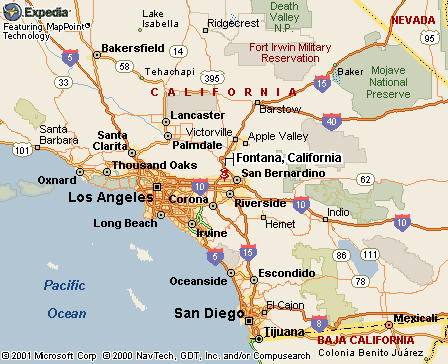|
|
Canku Ota |
|
|
(Many Paths) |
||
|
An Online Newsletter Celebrating Native America |
||
|
March 9, 2002 - Issue 56 |
||
|
|
||
|
Cherokee's Story Spurs Reading |
||
|
by Marcia T. Gonzales The
Press Enterprise
|
||
|
He is Sequoyah, a Cherokee Indian who, despite being illiterate, invented the Cherokee alphabet and taught thousands of Native Americans to read. Through research, assistant principal Linda Buck discovered that the school's namesake was a vocal promoter of literacy. She jumped at the chance to use his story to encourage students to read. "We learned that Sequoyah stands for literacy and, being educators, literacy is of upmost importance to us," Buck said. "We found the connection very powerful and significant." The middle school is named after the California tree, which was named after Sequoyah. It is not clear why the spelling is different. Buck and school principal Anne Roth set out to find a photo of Sequoyah, who lived in Oklahoma in the 1800s. They located a larger-than-life painting that had been commissioned in 1965 by Oklahoma state officials. The artwork, painted by Charles Banks Wilson, depicts Sequoyah holding the Cherokee syllabary (a set of written signs representing syllables) that he created. The painting once hung in the Oklahoma state Capitol building. Hoping to obtain copies of his work, they got in touch with Wilson, who was eager to give the school an autographed, though smaller, replica of his painting. School administrators said he told them he was honored to have his work displayed at Sequoia Middle School. The artwork was framed and will be unveiled next month during a dedication of the school's new academic wing. Sequoia Middle School, which serves mainly Latino students in seventh and eight grade, has a high number of students who are learning to speak English. Reading remains one of the school's weaknesses, Buck said. That is why teachers hope to motivate students with Sequoyah's story. Some already are incorporating the tale into their lessons. "It's very important for our students to understand that no matter where you start anything is possible," Roth, a native of Oklahoma, said. "Here is a man who went from being uneducated but, because of his belief and dedication, he became a very meaningful figure." Now, students who used to say that their school was named after the giant California tree will know that it was really named after Sequoyah, Buck said.
|
||||||
|
|
||
|
|
||
| Canku Ota is a free Newsletter celebrating Native America, its traditions and accomplishments . We do not provide subscriber or visitor names to anyone. Some articles presented in Canku Ota may contain copyright material. We have received appropriate permissions for republishing any articles. Material appearing here is distributed without profit or monetary gain to those who have expressed an interest. This is in accordance with Title 17 U.S.C. section 107. | ||
|
Canku Ota is a copyright © 2000, 2001, 2002 of Vicki Lockard and Paul Barry. |
||
|
|
|
|
|
The "Canku Ota - A Newsletter Celebrating Native America" web site and its design is the |
||
|
Copyright © 1999, 2000, 2001, 2002 of Paul C. Barry. |
||
|
All Rights Reserved. |
||

 FONTANA,
CA - Teachers at Sequoia Middle School in Fontana have a powerful new
tool to promote reading in the classroom.
FONTANA,
CA - Teachers at Sequoia Middle School in Fontana have a powerful new
tool to promote reading in the classroom. 